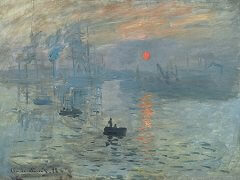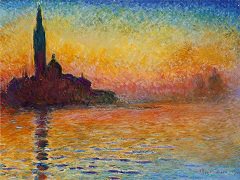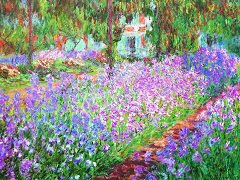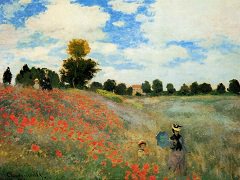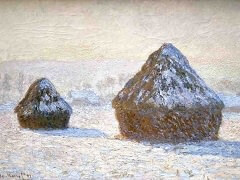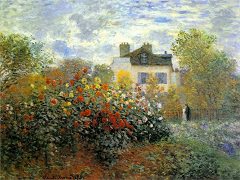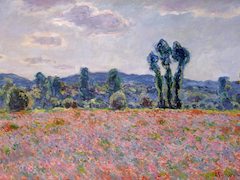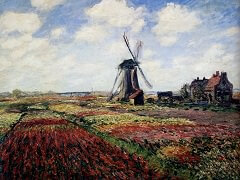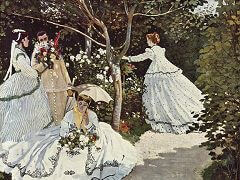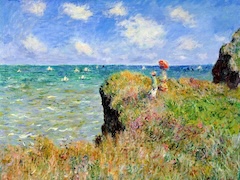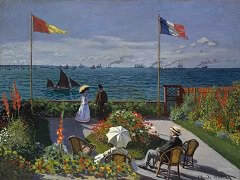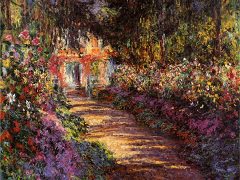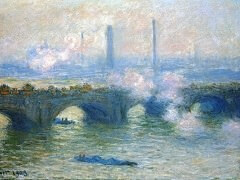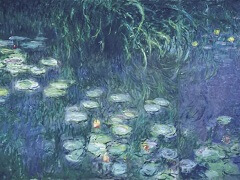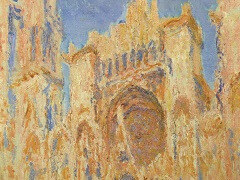Nympheas, 1905 by Claude Monet
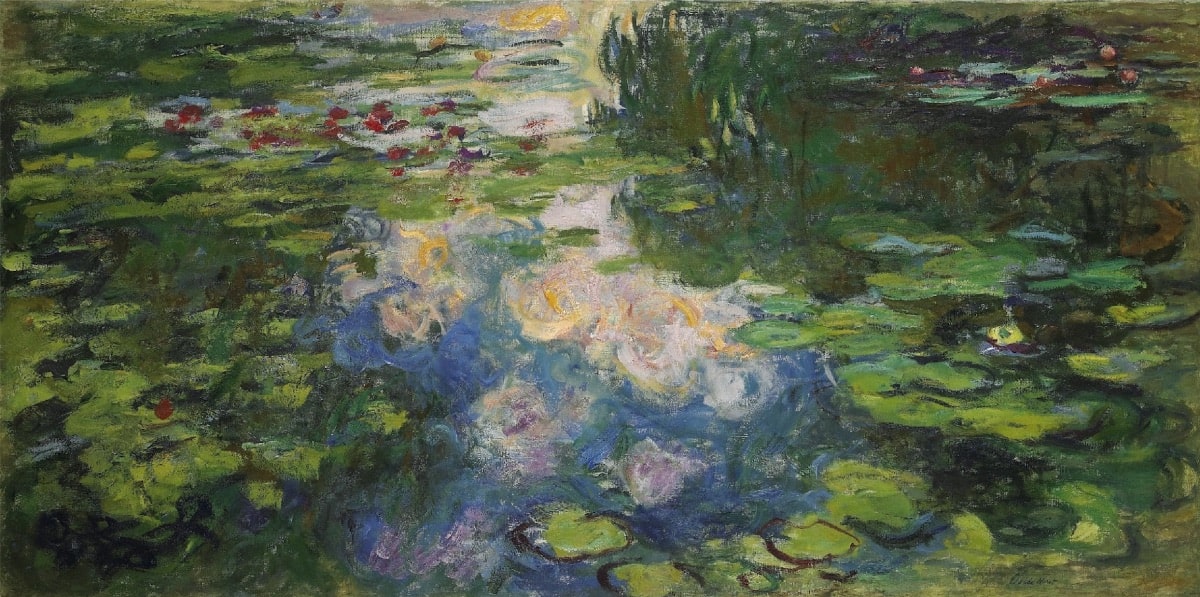
Monet's giant Nympheas (water lilies) series culminated his life's work. These paintings show him combining all the motifs he most loved to paint: his garden, water, and the effect of light and seasons on both.
By this time, Monet was financially stable and could exhibit and sell his canvases with ease. After a long journey and much hardship, he finally achieved the status he sought, f further cemented by the State Commission for his water lily paintings, which would eventually hang in the Orangerie in the Tuileries.
His garden became his world in his final years and he spent the lost three decades of his life recording it, experimenting with different views and techniques. By 1905 and the time of this painting, he had eliminated conventional viewpoints with a horizon and instead was solely concentrated on the flat surface of the pond. His compositions focused on the horizontals of the water lilies and cloud reflections and the verticals of the reflected trees and reeds. The juxtaposition of these elements, both real and reflected, added depth and a dream-like quality.

